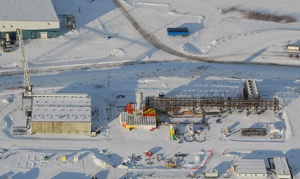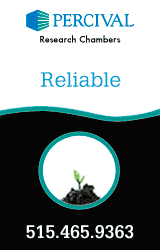Making Biofuels From Waste a Reality
 It’s something we might not like to think about, let alone talk about, but every day it accumulates. Garbage. Trash. Waste. Regardless of the label, people throw out multiple items on a daily basis—from food scraps and product packaging, to bottles, papers, batteries, yard clippings, and even clothing and appliances. It’s estimated each person in the United States produces approximately four pounds of garbage a day.
It’s something we might not like to think about, let alone talk about, but every day it accumulates. Garbage. Trash. Waste. Regardless of the label, people throw out multiple items on a daily basis—from food scraps and product packaging, to bottles, papers, batteries, yard clippings, and even clothing and appliances. It’s estimated each person in the United States produces approximately four pounds of garbage a day.
Perhaps not surprisingly, in 2011, the US generated a total of 459 million metric tons of municipal solid waste (MSW), of which 63% was landfilled. The remainder was recycled, composted, or incinerated. Canadians haven’t faired much better, historically speaking. In 2008, Canada produced 1,031 kilograms (or 2,273 pounds) per capita of municipal waste—that’s 2.6 times as much as the best performer, Japan.
Fortunately, times are changing and environmentally friendly waste programs are on this rise. More than ever before, cities around the world are seeking sustainable means of managing the increasing volumes of MSW that’s generated every year. At the same time, countries concerned with their energy security are looking for viable alternatives to fossil fuels. The production of biofuels from waste offers a solution to both of these issues.
This concept is quickly becoming a commercial reality with North America’s first, full-scale municipal waste-to-biofuels facility under construction in Canada’s Edmonton, Alberta. Once fully operational in 2014, the waste-to-biofuels plant will produce up to 38 million litres of ethanol (10 million gallons) per year.
Renewable fuel
Biofuels (also called renewable or alternative fuels) can now be produced from an array of materials. First-generation ethanol—made from sugar crops, such as corn and sugarcane—was the first biofuel to enter the marketplace, and remains the most commonly used biofuel in the world.
In 2011, the Global Renewable Fuels Alliance estimated world ethanol production at 84.5 billion litres; a global market size of US$57.7 billion*. Second-generation biofuels (also called cellulosic or advanced biofuels) are, in turn, made from biomass and residual materials, such as forest and agricultural residues, and municipal solid waste (MSW). The transformative technologies needed to achieve second-generation biofuels have been developed, tested, and validated over the last decade. As a result, the industry is beginning to manufacture large-scale facilities in several states and provinces across North America, representing billions of dollars in private investment.
The future waste-to-biofuels facility in Edmonton is at the forefront of this first wave of commercial, advanced biofuels development.
Waste advantages
From a practical and economic standpoint, MSW has countless advantages, and is widely recognized as a feedstock of choice. An abundant, low-cost resource, MSW is readily collected and available in rural and urban areas where waste management practices, such as garbage collection, transportation, and recycling are already in place. The use of trash as feedstock also brings value out of materials that cannot be recycled, and would otherwise end up in landfills.
At the Edmonton Waste Management Centre, the city has already diverted 60% of its waste from the landfill through its recycling and composting programs. The city’s vision was to increase that already impressive diversion rate to 90%. After analyzing more than 100 technologies from around the world, the city decided to partner with a Canadian clean energy company to convert non-recyclable and non-compostable MSW into renewable transportation fuels.
The proprietary technology selected by the city of Edmonton allows for the conversion of heterogeneous, carbon-rich materials into fuels and chemicals. This innovative green chemistry process converts MSW into a pure, chemical-grade synthesis gas, which is then transformed into biofuels and chemicals through catalytic reactions.
The technology offers an alternative to landfilling and complements recycling efforts. It also produces a marketable, high-demand product. The 38 million litres of ethanol to be produced at the facility will be blended with gasoline at the mandated five percent. More than 400,000 cars could be fueled annually with the production of this facility, contributing to the Renewable Fuel Standard (RFS) established in the province of Alberta, as well as the federal mandate.
In the US, the RFS program establishes an annual minimum requirement for volume of biofuels production and consumption. For 2013, the volume established by the Energy Independence and Security Act calls for a volume of 16.55 billion gallons. Ethanol produced from separated MSW qualifies as cellulosic biofuels under these regulations.
Clean technologies, using non-recyclable municipal solid waste to produce biofuels, provide a local solution for waste issues and energy needs. In addition to reducing GHG emissions and providing municipalities with an alternative to landfilling, the technologies create quality jobs, stimulate regional economies, and help diversify the energy portfolio. The production of second-generation transportation fuels, such as ethanol from biomass and MSW, is now becoming a reality in North America—and, that’s good news for future generations.
*Based on total global production of 84.5 billion litres in 2011 and one year average ethanol price of $0.68/litre in 2011 from contracts traded on the Chicago Mercantile Exchange.
Marie-Hélène Labrie is the VP of Government Affairs and Communications at Enerkem, Inc.
Enerkem Inc.
www.enerkem.com
Author: Marie-Hélène Labrie
Volume: March/April 2013











